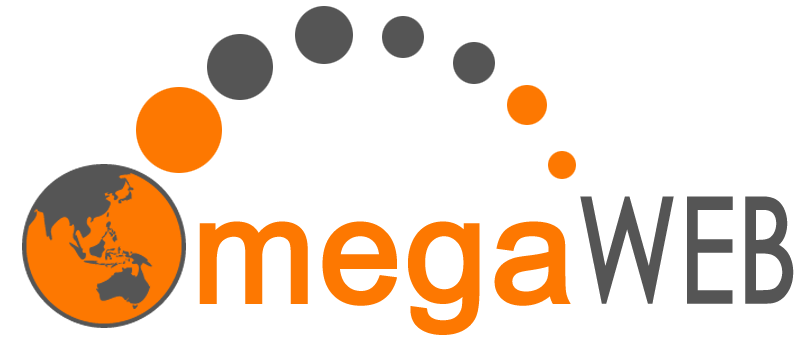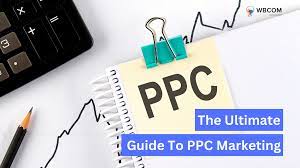PPC marketing, or Pay-Per-Click marketing in Sydney, stands as a pivotal pillar in the realm of digital advertising. Its dynamic nature and potential for precise targeting make it a go-to strategy for businesses looking to maximize their online visibility and drive conversions. In this comprehensive guide, we’ll delve into every facet of PPC marketing, from its fundamental principles to advanced strategies and best practices.
Introduction to PPC Marketing
PPC marketing, in its essence, involves advertisers paying a fee each time one of their ads is clicked. It’s a model that offers instant visibility on search engine results pages (SERPs) and other digital platforms, with advertisers bidding on keywords relevant to their target audience. The significance of PPC marketing lies in its ability to deliver immediate results, enabling businesses to reach their prospects at the right moment with compelling offers.
Defining PPC Marketing
At its core, PPC marketing revolves around the concept of paying for clicks on digital advertisements. Unlike traditional advertising methods, where advertisers pay a fixed fee regardless of performance, PPC offers a more cost-effective approach, as advertisers only pay when users engage with their ads.
Importance of PPC Marketing in Digital Advertising
In today’s hypercompetitive digital marketing, having a robust PPC strategy is crucial for businesses aiming to stand out amidst the noise. PPC allows advertisers to laser-target their audience based on demographics, interests, and behavior, ensuring that every dollar spent generates tangible results in terms of website traffic, leads, and sales.
Understanding PPC Platforms
To navigate the realm of PPC marketing effectively, it’s essential to familiarize oneself with the leading platforms driving this advertising model.
Google Ads
As the undisputed leader in online advertising, Google Ads offers unparalleled reach and precision targeting capabilities. With a vast network encompassing Google Search, Display Network, YouTube, and more, advertisers can tailor their campaigns to reach users at every stage of the buying journey.
Overview of Google Ads
Google Ads provides advertisers with a comprehensive suite of tools for creating, managing, and optimizing PPC campaigns. From text ads displayed alongside search results to visually engaging display ads showcased on millions of websites, Google Ads empowers advertisers to connect with their audience across various touchpoints.
Key Features and Benefits
Among its standout features are advanced targeting options, such as demographic targeting, device targeting, and remarketing, which enable advertisers to fine-tune their campaigns for maximum effectiveness. Additionally, Google Ads offers robust analytics and reporting tools, allowing advertisers to track the performance of their campaigns in real-time and make data-driven optimizations.
Bing Ads
While often overshadowed by Google, Bing Ads presents a lucrative opportunity for advertisers looking to diversify their PPC efforts and tap into a different audience segment.
Introduction to Bing Ads
Bing Ads, powered by Microsoft Advertising, serves ads on Bing search results, as well as on Yahoo and AOL, reaching millions of users across desktop and mobile devices. Despite its smaller market share compared to Google, Bing Ads boasts a highly engaged user base, making it a viable platform for advertisers seeking cost-effective alternatives.
Unique Aspects of Bing Ads
One of the distinct advantages of Bing Ads is its demographic targeting capabilities, allowing advertisers to reach specific age groups, genders, and income brackets with precision. Moreover, Bing’s partnership with Yahoo and AOL extends the reach of ads beyond its own search engine, providing advertisers with additional exposure across multiple digital properties.
Setting Up Your PPC Campaign
The foundation of a successful PPC campaign lies in meticulous planning and execution. From defining clear objectives to crafting compelling ad copy, every step in the setup process plays a crucial role in determining the campaign’s success.
Defining Goals and Objectives
Before launching a PPC campaign, it’s essential to establish clear goals and objectives. Whether the aim is to drive website traffic, generate leads, or boost sales, having well-defined goals will inform the overall strategy and help measure the campaign’s effectiveness.
Keyword Research and Selection
Central to any PPC campaign is keyword research, the process of identifying the terms and phrases that potential customers are using to search for products or services online. By conducting thorough keyword research, advertisers can uncover valuable insights into their target audience’s preferences and behavior, informing their bidding strategy and ad content.
Creating Compelling Ad Copy
In the competitive landscape of PPC advertising, crafting compelling ad copy is paramount to capturing the audience’s attention and driving clicks. From attention-grabbing headlines to persuasive ad copy, every element of the ad should be optimized to resonate with the target audience and compel them to take action.
Setting Budgets and Bids
Effective budget management is key to maximizing the ROI of a PPC campaign. Advertisers must strike a balance between setting competitive bids to ensure ad visibility and allocating budgets strategically to prevent overspending. By closely monitoring performance metrics and adjusting bids accordingly, advertisers can optimize their campaigns for maximum efficiency.
Optimizing Your PPC Campaign
Launching a PPC campaign is just the beginning; ongoing optimization is essential to ensure continued success and maximize ROI. By monitoring performance metrics, testing ad variations, and refining targeting parameters, advertisers can fine-tune their campaigns for optimal performance.
Monitoring Performance Metrics
Tracking key performance indicators (KPIs) such as click-through rate (CTR), conversion rate, and cost per acquisition (CPA) is essential for evaluating the effectiveness of a PPC campaign. By analyzing these metrics regularly, advertisers can identify areas for improvement and make data-driven optimizations to enhance campaign performance.
A/B Testing Ad Variations
A/B testing, also known as split testing, involves creating multiple variations of an ad and testing them against each other to determine which performs best. By experimenting with different ad elements such as headlines, ad copy, and calls-to-action, advertisers can identify the most effective messaging and design for their target audience.
Implementing Conversion Tracking
Conversion tracking allows advertisers to measure the effectiveness of their PPC campaigns by tracking the actions that users take after clicking on an ad, such as making a purchase or filling out a contact form. By accurately attributing conversions to specific ads and keywords, advertisers can optimize their campaigns for maximum ROI and drive meaningful results.
Geographic Targeting
Geographic targeting allows advertisers to show their ads to users in specific locations, ensuring that their message resonates with the right audience segments. Whether targeting customers in a particular city, region, or country, geographic targeting enables advertisers to tailor their campaigns to local preferences and market conditions.
Budget Management and ROI Analysis
Effective budget management is essential for maximizing the ROI of your PPC campaigns. By carefully monitoring expenses, optimizing bids, and analyzing performance data, advertisers can ensure that every dollar spent delivers tangible results.
Calculating ROI for PPC Campaigns
ROI, or return on investment, measures the profitability of a PPC campaign by comparing the revenue generated to the amount spent on advertising. By accurately tracking revenue attribution and accounting for all campaign costs, advertisers can calculate their ROI and assess the effectiveness of their PPC efforts.
Strategies for Maximizing Budget Efficiency
To make the most of your PPC budget, it’s essential to prioritize high-value keywords and audience segments that are most likely to convert. By focusing on top-performing campaigns and reallocating budgets from underperforming ones, advertisers can optimize their spending and drive greater ROI.
Common Mistakes to Avoid in PPC Marketing
Despite its potential for driving results, PPC marketing is not without its pitfalls. From overlooking quality score to neglecting negative keywords, here are some common mistakes to avoid when running PPC campaigns.
Ignoring Quality Score
Quality score is a metric used by search engines to evaluate the relevance and quality of your ads and keywords. Ignoring quality score can result in lower ad positions and higher costs, as search engines prioritize ads with higher quality scores in their auctions.
Overlooking Ad Placement
Ad placement plays a significant role in determining the visibility and effectiveness of your ads. Overlooking ad placement and failing to optimize bids for top-performing positions can result in missed opportunities and reduced ROI.
Neglecting Negative Keywords
Negative keywords are a critical component of PPC campaign optimization, helping advertisers filter out irrelevant traffic and focus on high-intent prospects. Neglecting to update negative keyword lists regularly can lead to wasted ad spend and lower overall campaign performance.
Conclusion: Mastering PPC Marketing for Success
In conclusion, PPC marketing presents a powerful opportunity for businesses to reach their target audience, drive engagement, and achieve their marketing objectives. By understanding the fundamental principles of PPC advertising, leveraging advanced strategies and tactics, and staying updated with the latest trends and technologies, marketers can master the art of PPC marketing and unlock new levels of success in the digital landscape. Whether you’re a seasoned PPC veteran or just getting started, embracing a data-driven approach and continuously testing and iterating on your campaigns will be key to achieving optimal results and driving meaningful business outcomes.





